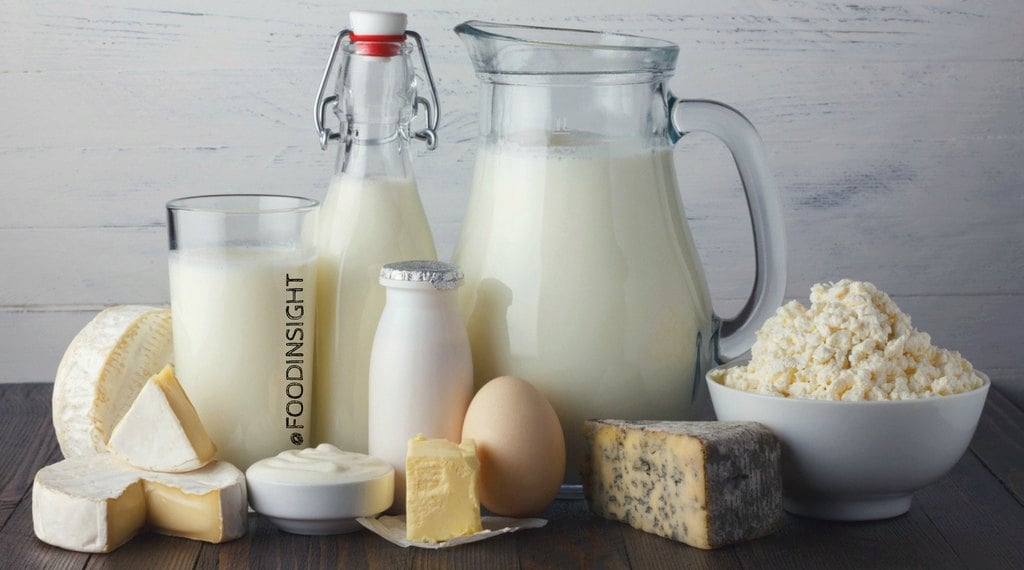Let’s celebrate dairy! Time to thank a dairy farmer, hug a cow, and splurge on ice cream, and highlight the nutritious qualities of dairy products.
The 2015-2020 Dietary Guidelines for Americans recommend 3 daily servings of dairy. There must be a good reason for this (other than dairy’s creamy, delicious flavor) since by law, these guidelines have to be evidenced based. Milk and other dairy products are great sources of protein and of three of the seven “shortfall nutrients” listed in the Dietary Guidelines: calcium, vitamin D and potassium as well as vitamin A and riboflavin. That being said, let’s take a closer look at how dairy products benefit your health.
Bone Health
Dairy products are powerful packages of bone health promoting nutrients including calcium, vitamin D, and potassium. Calcium is well known for its role in improving bone density and preventing osteoporosis. Unfortunately, over 40% of Americans fall short of the estimated average requirement for calcium.
Here’s where dairy comes in. As far as efficiently meeting daily calcium needs goes, it doesn’t get much better than dairy. One standard serving of dairy, be it an 8 ounce serving of milk, a 1.5 ounce serving of cheese or a 6 ounce serving of yogurt, contains about 30% of your daily calcium needs. That’s kind of a big deal considering that, other than dairy alternatives which are fortified to be equal to milk in calcium, it’s hard to find foods with equivalent calcium to diary.
For example, collard greens, the vegetable touted for having the highest calcium content, contain only 13% of the recommended daily allowance for calcium. To put it into perspective, three servings of dairy gets you pretty close to your daily calcium needs, but you would need over 7 servings of collard greens, or far more of other vegetables, to come close to the RDA. Even to a self-proclaimed veggie enthusiast like me, the dairy products sound like a more feasible option.
Even when we do get enough calcium, it isn’t always absorbed effectively. Having enough vitamin D allows us to efficiently absorb calcium. However, over 90% of Americans fall short on their vitamin D intake. We can make some Vitamin D ourselves with exposure to sunlight, but this capacity is reduced depending on how far north you live and how much sunscreen you use. Thankfully, someone who didn’t want us to all suffer from weak bones decided that it would be a great idea to fortify milk, which is naturally high in calcium, with vitamin D to improve its absorption.
Weight Maintenance
In addition to promoting bone health, including low fat dairy products has been shown to promote weight loss and maintenance as part of a healthy diet. Milk is a great source of protein, which is both important for building strong muscles and has the added benefit of helping you feel full for longer. Milk, cheese, and regular yogurt have about 8-9 grams per serving and and Greek yogurt packs in 17 grams per 6 oz serving! The RDA for protein is set at 46 gm per day for women and 56gm per day for men, so three servings of milk, yogurt or cheese gets you about half way there. Since protein foods such as diary are highly satiating, they can help you feel full longer.
Blood Pressure
Various studies have also linked consuming low-fat dairy products with lower blood pressure and delayed onset of hypertension. This may be due in part to the fact that dairy products are good sources of potassium and inadequate potassium, in addition to high sodium intake, plays a role in the development of high blood pressure. The phosphorus in dairy may also play a role in preventing hypertension.
Other Benefits
Even if you’re not interested in healthy bones, blood pressure and weight, dairy is still a great choice. The nutrients in dairy products do a myriad of important jobs that help keep your body running the way it should. In addition to bone health, calcium allows muscles to contract and relax and plays an important role in both blood clotting, and transmitting signals through the nervous system. Adequate levels of potassium are necessary for your heart to beat. Riboflavin, which is present in milk at 35-40% of your RDA, plays a key role in turning the food you eat into energy and vitamin A is important for healthy eyesight.
Doing Dairy Right
Dairy is a delicious package for essential nutrients that many American’s aren’t getting enough of. However, before you run off and overdo it on the ice cream, it is important to remember that dairy products do have saturated fats, a nutrient that the Dietary Guidelines recommend should make up less than 10% of your total intake of calories.
This blog was written by Christina LiPuma, dietetic intern at Brigham & Women’s Hospital.
